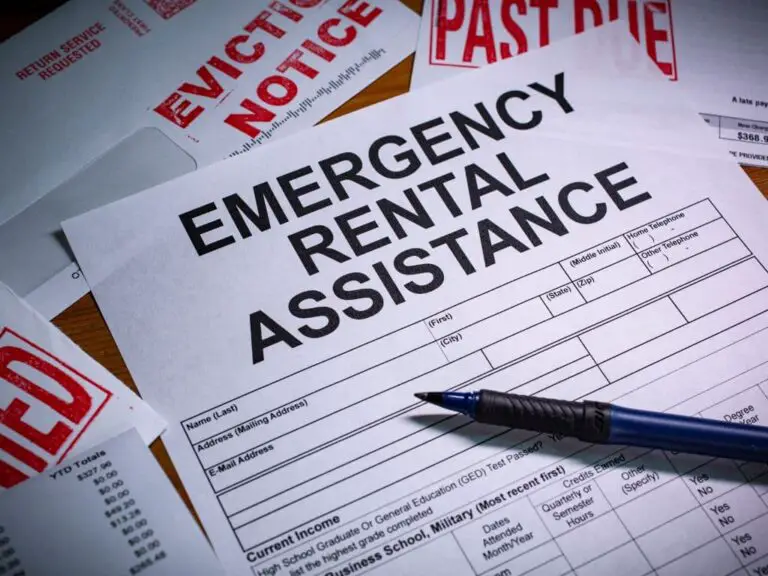Can You Reverse a Reverse Mortgage?
A reverse mortgage allows seniors to access the home equity they have built up in their homes. It provides cash that does not need to be repaid until the borrowers no longer live in the home. This type of loan can be an attractive option to supplement retirement income and provide financial security. However, reverse mortgages also come with risks, fees, and interest that can grow over time. If homeowners eventually cannot keep up with payments, the loan may go into default. This could impact your heirs‘ inheritance or lead to your home being sold in a foreclosure sale.
If you have taken out a reverse mortgage and now want to explore your options, you may be wondering: can you reverse a reverse mortgage after it has already been issued?
Yes, it is possible to reverse a reverse mortgage. However, the process can be complex and costly, involving repayment of the full loan balance, accrued interest, and fees. The easiest time to reverse is within the three-day “cooling off” period after closing. Other options include refinancing a portion of the loan or selling the property to repay the loan.
This article will explain how reversing a reverse mortgage works, associated costs and risks, and alternatives you may want to consider.

How Does a Reverse Mortgage Work?
First, it is helpful to understand what a reverse mortgage is and how it functions.
A reverse mortgage allows homeowners aged 62 or older to convert home equity into cash. With a regular “forward” mortgage, the borrower makes monthly payments to the lender. A reverse mortgage works in reverse – the lender makes payments to the borrower.
These payments can be taken as a line of credit, monthly payouts, or a lump sum. The borrowers can use the money for any purpose, such as healthcare expenses, home improvements, or daily living costs.
Unlike a traditional loan, no repayment is due until the borrowers die, sell the home, or move out permanently. At that point, the loan comes due, and the borrowers or their heirs would need to pay back the loan amount plus accrued interest and fees.
The loan is secured by the home itself. When the loan becomes due and can’t be repaid, the lender can foreclose on the home.
Most reverse mortgages today are Home Equity Conversion Mortgages (HECMs) insured by the FHA. To qualify, homeowners must be 62 or older, occupy the home as their primary residence, complete HUD counseling, and meet certain financial requirements.
Can You Cancel or Reverse a Reverse Mortgage?
Yes, a borrower can cancel or reverse a reverse mortgage, but it is uncommon. Once a reverse mortgage has closed, the loan documents are finalized.
However, cancelling may be possible in limited scenarios:
- Within 3 business days after closing, during a short cooling-off period, like with other mortgages
- If the borrower can prove they were a victim of fraud or deception
- If the lender did not fulfill certain terms of the agreement
The process to cancel a reverse mortgage is not easy. Borrowers will need to act quickly and be prepared to pay off the full loan balance.
How to Reverse a Reverse Mortgage
If you have decided you want to cancel an active reverse mortgage, here are the basic steps:
1. Contact Your Lender
- Inform your lender in writing that you want to reverse your reverse mortgage as soon as possible
- Ask about requirements, fees, and payoff amount
- Get any available information in writing
2. Consult With a Housing Counselor
- HUD-approved housing counselors can explain your rights and options
- A counselor can review the loan terms and work with the lender on your behalf
3. Review Your Contract and Legal Rights
- Check the loan documents to understand cancellation terms and timeline
- Consult a real estate attorney about any rights violations or options
4. Consider Your Financial Situation and Future Needs
- Make sure you can afford to repay the full loan balance
- Factor in any prepayment penalties or cancellation fees
- Weigh the need for cash/equity versus repayment burdens
5. Make an Informed Decision
- Decide if reversing the mortgage is the right choice for your situation
- Proceed if you want cancellation and can pay off the mortgage
- Look into alternatives if needed
Reversing a reverse mortgage is essentially treated like paying off and cancelling any mortgage early. The lender has to be fully repaid, including all principal, accrued interest, and any prepayment penalties allowed by the loan contract. Additional administrative or processing fees may also apply.
What Are the Options for Reversing a Reverse Mortgage?
There are a few ways borrowers can pay off a reverse mortgage loan balance and effectively reverse the mortgage:
- Refinancing – Take out a new forward mortgage or other loan type to pay off the reverse mortgage
- Selling the home – Sell the home and use the sale proceeds to repay the reverse mortgage
- Repaying the loan in full – Use savings or assets to pay the full balance due
- Loan deferment – Request delays in loan repayment if facing financial hardship
Each option has pros and cons to weigh carefully. Much depends on the borrower’s financial situation.
What Are the Fees and Costs Associated With Reversing a Reverse Mortgage?
Reversing a reverse mortgage can be an expensive process. Here are some common fees and costs to expect:
- Remaining loan principal balance
- Accrued interest charges
- Mortgage insurance premiums
- Service fees – $300 to $500+
- Closing costs on new mortgage loan (if refinancing)
- Prepayment penalties – up to 10% of balance
- Professional fees (real estate attorney, housing counselor)
To cancel and repay the loan, most borrowers need to come up with sizable amounts of cash in a short timeframe. This can be extremely difficult for borrowers on fixed incomes. Think carefully about whether you have the financial means to cover these hefty costs before deciding to reverse your mortgage.
What Are the Risks of Reversing My Reverse Mortgage?
Canceling and repaying a reverse mortgage does come with some risks to consider:
- Depleting retirement savings – Draining investments or assets needed for living expenses should be carefully weighed.
- Losing equity – Repaying the loan consumes home equity that could otherwise be passed on.
- Tax consequences – Large loan repayments may have tax implications in some cases.
- Future needs – Eliminating access to home equity could impact ability to fund future healthcare/long-term care costs.
- Foreclosure – Not being able to repay the balance in full can still result in foreclosure.
For these reasons, think twice before taking steps to reverse your mortgage. Make sure you grasp the full financial picture, including costs, alternatives, and potential outcomes. Consulting qualified financial and legal advisors is highly recommended.
What Are the Alternatives to Reversing a Reverse Mortgage?
If cancelling the reverse mortgage does not make sense for your situation, here are a few alternatives to consider instead:
1. Refinancing the Reverse Mortgage
Some lenders may allow borrowers to refinance into a new reverse mortgage. This opens up cash again while keeping the existing equity untouched. Drawbacks include incurring new upfront costs.
2. Selling the Home
Selling and downsizing to a new home is an option if staying in the current home is not essential. Sale proceeds can repay the old mortgage.
3. Repaying the Loan in Full
If able to save up funds over time, the loan could eventually be repaid when ready instead of rushing into an urgent cancellation.
4. Applying for a Deferment or Forbearance
If facing financial hardship, HUD allows for deferment of reverse mortgage payments. Temporarily halting payments may allow more time to sort out alternatives.
Conclusion
Reverse mortgages are complex products that can be difficult to exit. While possible to reverse a reverse mortgage, doing so requires repaying the loan in full promptly. For most borrowers, coming up with such large amounts on short notice is unrealistic.
Consider less drastic alternatives, such as refinancing or selling the home. Seek advice from financial and legal professionals. With careful planning, you may be able to retain needed equity or improve cash flow. But reversing course on a reverse mortgage should not be done lightly.







